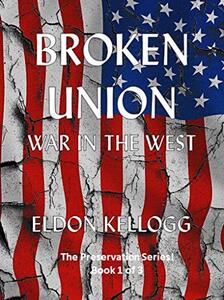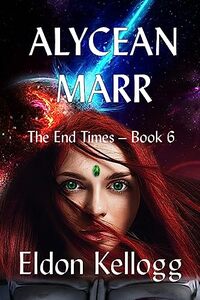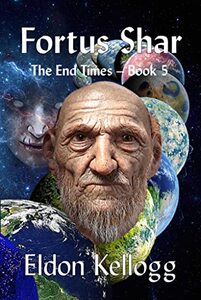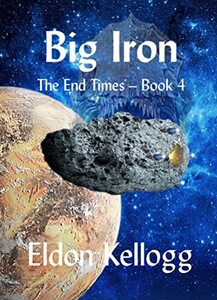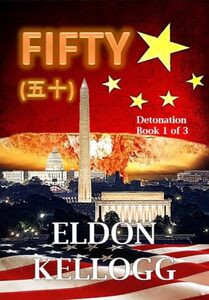Eldon Kellogg Interview Published on: 16, Mar 2020
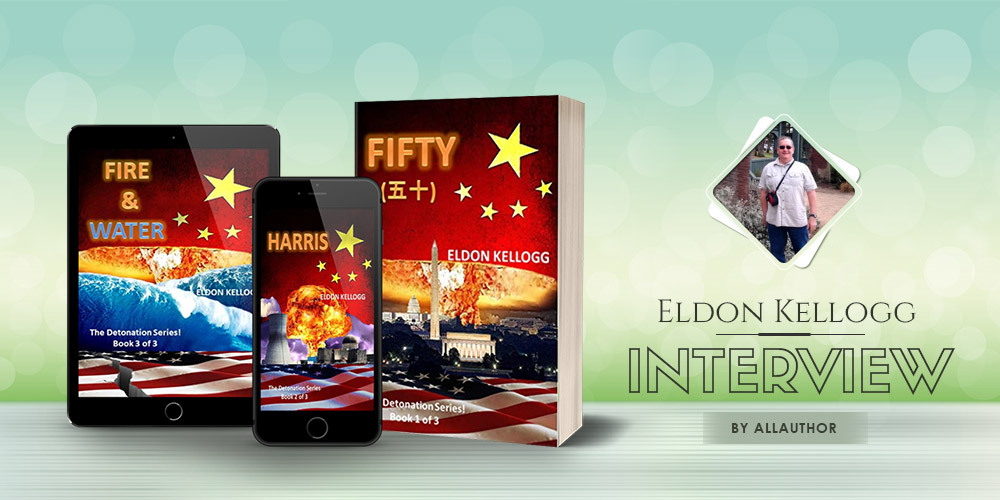 How much time did you spend in Durham, North Carolina?
How much time did you spend in Durham, North Carolina?
I was born in Durham, North Carolina on November 8, 1951. I left home for good when I enlisted in the US Army in 1972. I went to Basic Training at Ft. Jackson, South Carolina. I next went to AIT (Advanced Infantry Training) at Ft. Hood, Texas. I was married in 1973. While at Ft. Hood, I was recruited by the Old Guard, the US Army ceremonial unit for Washington, DC.
What made you decide to graduate with a specialty in Radiation Protection? Did you ever think of teaching math at the school?While in the Commander-in-Chief's Guard of the Old Guard, station at Ft. McNair, Washington, DC, I applied to the US Army Nuclear Power Plant Operator School at Ft. Belvoir, Virginia. I graduated from there in 1974. You could choose from three specialties: electrical, mechanical or chemistry/health physics. I struggled through electrical theory, being a mechanic didn't appeal to me, so I chose chemistry/health physics. The last thing on my mind was teaching after graduation. I finished first in the class in Math and they basically told me I was going to become the new math instructor. I replaced a guy who had a Masters in Math and was going to OCS (Officer candidate School). He never bothered to create lesson plans. I had to start from scratch. There wasn't time to send me to Instructor Training. A new class was scheduled to start in two weeks. I stayed one day ahead of the students. I would grade papers at night and create a lesson plan for the next day.
What kind of experiences did you have while working at Three Mile Island Unit 2?We left Hawaii and the Army in late 1979 with a one-year-old son. I was unemployed and looking for a job. We were staying with relatives in North Carolina when I was contacted about working at Three Mile Island. Some old graduates of the Nuclear Plant Operator School had started a company that provided Health Physics support and had part of the contract at TMI Unit 2. I was not prepared for the type of work I found there. The Containment Building still had 20 feet of water in the basement. We wouldn't enter there for over two years. The Reactor Auxiliary Building was highly contaminated. Every type of tank was filled with highly radioactive water. My second day on the job, I dressed out, put on a respirator and spent three hours inside the Aux Building doing surveys and verifying Locked High Radiation Areas. I had tightened the respirator too tightly. It felt like a spike had been driven into the top of my skull. Actual decontamination work required dressing out and then encasing yourself in plastics to make yourself waterproof while hydrolazing (powerwashing) areas as part of initial decontamination. Wearing plastics is like being in an oven. The heat has nowhere to go. People passing out was not uncommon. My first entry into the Containment Building was almost my last. I stayed in far too long. I lost 16 pounds of sweat in three hours and passed out when I left the building. My heart rate was 300 bpm. I wound up in a hospital for two days getting my heart rhythm to stabilize.
Majoring in mechanical engineering, how did you end up writing your own novels?We moved back to North Carolina in 1984 when I accepted a job with Carolina Power & Light at the Harris Nuclear Plant. The plant was still being built and didn't start up until 1987. I retired from there in 2012. Over the years I worked a lot of rotating shift work. On night shift things were usually pretty slow. One night I walked up to the Fuel Handling Building roof. The roof was over 300 feet long and 50 feet wide. I imagined terrorists flying onto the roof in helicopters and taking over the plant. That was the start . . . that one idea. It stayed in my head for over 15 years until I retired and began writing.
How do you feel about your work being displayed in the Smithsonian in Washington, DC?In 1990 I received a call from my sister living near Washington, DC. Her ex-husband was a diplomat stationed in Kuwait. Their oldest son had been visiting his father when Iraq invaded Kuwait. They both were taken prisoner and taken to Baghdad as hostages. She was "upset" to say the least. That event and the subsequent war inspired me to build a chess set, actually two. After the war I sent one to President George HW Bush and one to General Schwarzkopf. The one I sent to the president was chosen for a display of presidential gifts at one of the Smithsonian museums in DC. Her oldest son became a Marine. His younger brother became a Green Beret. The older brother was the inspiration for a secret service agent in my third novel, FIRE & WATER.
How did you begin writing the Detonation series? Do you find it more challenging to write the first book in a series or to write the subsequent novels?When I first started writing, I intended to write two novels. The first was going to address the possibility of nuclear weapons being smuggled into the US. This has been addressed in different novels, TV shows and movies over the years, but I wanted something different. I feel the ultimate objective of the PRC is to dominate the entire planet. The United States is in their way. Direct military confrontation is off the table, at least for another decade or so. Blackmail seems more likely to me. So, FIFTY became a novel. HARRIS just seemed a logical extension of the story. Many of the characters in HARRIS, especially the plant workers, were inspired by real people. Most of them recognized themselves, and it has become a running joke about which ones of them I killed off. The idea for FIRE & WATER developed late in the writing of HARRIS. Those first three novels were the Detonation series. After that, the story became World War III. I've always been a huge fan of science fiction. The next three novels: BU-War in the West, BU-War in the East and BU-Preserved, went from conventional warfare to advanced technology warfare. I remember being amazed during the First Gulf war when the F-117 stealth bomber went public. After the war we went to an air show and an F-117 flew over. You couldn't hear it coming until it was past you. The B-2 was even more amazing. That was 30 years ago. What aircraft are still being developed? That led me to the Dory and Kraken spacecraft, artificial intelligence and laser weapon systems. One of the most interesting aspects of my latest writing is the human interaction with AI.
Who inspired the character of Amanda Langford in "Broken Union"? Do you have a hard time fleshing out male characters?I've had people ask me about Amanda Langford. Who is she based on? She's actually a composite of different women I've known, met or seen in movies. When I first started experimenting with writing in the 1990s, I only had male characters. It wasn't a conscious thing. At the time it just seemed natural. When my wife pointed this out, it was like a light bulb going on. Female characters are more complex, at least to me. They can be strong and fragile at the same time. There are more opportunities for emotional interaction with the reader.
How do you think your writing style has changed over the years?My writing style is visual. I place myself in the scene as an observer and record what I'm seeing. I grew up watching cliff hanger serials as a child. Every episode ended with the hero in dire jeopardy. As my writing has evolved, I find myself ending chapters and books the same way. Some people want a novel to have a clean ending . . . The End! I'd rather pull you into the next novel or the next chapter. One interesting fact: I design my own covers using Powerpoint, and I design the cover before I write the novel. The cover tells the basic plot of the novel inside. One thing that has surprised me is the speed at which I've written these novels. The first four took seven months each to turn out a rough draft. The fifth took only three months. It just poured out. How I titled the books was interesting. FIFTY was obviously based on the number of weapons smuggled into the US. HARRIS was the name of the nuclear power plant. FIRE & WATER came from the ending of HARRIS. That is my favorite cover. BROKEN UNION was trickier. It was based on the literal shattering of the United States, not as a concept, but as a physical reality. Could the Founders great experiment survive? The covers reflect the destruction and uncertainty.
How many books are planned in The Preservation Series?BU-PRESERVED is definitely the end of the series. I intended to write a three-novel series, but when I finished FIRE & WATER there was still more story to tell. If I had it to do over again, it would have been a six-book series.
What has your AllAuthor experience been like so far? What are some highlights?The most challenging aspect of being a self-published writer is marketing!! I still don't have the answer, if there is one. I'm still learning. AllAuthor has been the most useful source I've come across yet. Most Sites want your money, but you get very little in return. The Magic Tool is great! I appreciate the opportunity to tell readers more about me, my writing and what makes me tick.
Share Eldon Kellogg's interview
Eldon Kellogg was born in Durham, North Carolina and left home for good when he enlisted in the US Army in 1972. He grew up watching cliff hanger serials as a child. Kellogg's work ranks with the best of the thriller genre. Eldon continues to keep his readers spellbound with each book he writes.

